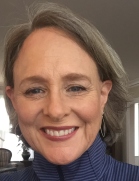 I am not a child psychologist and cannot explain why this specific phenomenon occurs in my class. Every time I give a student an erasable marker and a whiteboard they become fearless and will try to solve any question I ask of them. Students spend more time talking, sharing, debating, discussing, collaborating and yes…laughing. They simply work more efficiently using whiteboards. Students do not put out the same effort during a paper and pencil activity.
I am not a child psychologist and cannot explain why this specific phenomenon occurs in my class. Every time I give a student an erasable marker and a whiteboard they become fearless and will try to solve any question I ask of them. Students spend more time talking, sharing, debating, discussing, collaborating and yes…laughing. They simply work more efficiently using whiteboards. Students do not put out the same effort during a paper and pencil activity.
I have tried to incorporate whiteboard activities in my classes (almost everyday) for the past 5 years. Arriving to class, collecting a few different coloured markers, cleaning off the whiteboards from the previous class is something my students do naturally. They are ready to start class with a problem to solve.
The whiteboards I use in my class are huge! They measure 32 inches by 24 inches and are made out of white acrylic. The stuff a shower is made from. Homedepot sells a whiteboard (they call it marker board) made from compressed woodfibers that measures 24×48 inches. The boards can be cut in half at no charge, so each board will cost you only $5!!!
I use white boards for the majority of my formative assessment activities. I can easily assess the students level of understanding on that specific learning target. Most importantly, I am able to work with the students on specific practice questions that will determine what the students should practice next. I am able to walk around the room, sit down with my students and actually talk to them about what is working well and what they still need to practice. These activities turn into something that provides immediate corrective feedback, which is the heart and soul of formative assessment. At the end of most activities the students use their phones to take pictures of their work so they can refer back to the practice questions later. The students also email me the pictures and I can send the picture to all of the students in the class.
Formative assessment strategies do not have to be complicated. You will be amazed at what you and the students can figure out with a simple whiteboard and a marker.
I am looking forward to once again be presenting at the Annual Pearson ATI Sound Grading & Communication Practices Conference on December 1-2, 2016 in Portland.
I have presented on this topic, quizzes, re-quizzes and testing a few times at this conference and the feedback has been positive. Pearson has agreed to buy a class set of these large whiteboards for me to use during the presentation and give away to a teacher or group of teachers to bring back to their school. Thank you Pearson!
Here is a list of a few popular activities
Speed Dating – the students perform tasks as fast as they can with a partner that can switch out randomly. This is a great activity fo the last 10 min of class or the entire period on Halloween.
Monk Boarding – the students performs tasks with partners in complete silence (like a monk). I like to throw in extra challenges, for example, the students need to rotate the steps in a long answer question or even rotate every other number or letter.
Find My Mistake (this is my favourite)
- Create the same number of long answer questions as there are groups
- Have a range of easy – medium – hard questions
- Assign the appropriate question for the type of group, for example, give the hard question to the human answer keys and an easy question to the group that is just happy to be here
- The students must answer the question on the white board, you can circle around, chat, hang out, and spend time with the groups that really need you
- Check the work for all of the groups
- ****then ask the groups think of an error that you would expect the other groups to make on your question. The group will then hide that error in their work as best as they can.
- The students will exchange boards and a new group must try to find the error.
- Set it up so the group that got an easy question to start checks over the work from the group that did the hard question. Everyone will benefit!
Switch-a-Roo
- Align questions to the center of the screen (or overhead) indicating every group must do that question
- Align questions to the left for students on the left side of the classroom
- Align questions to the right for students on the right side of the classroom
- These questions should be of the same topic, but opposite or different enough so that when the students walk to the other side of the room to check the work on another board the students are reviewing the same topic in a different way
A few more simple activities:
- Question exchanges—answer a question exchange boards
- Write out metaphors—for complicated math and chemical processes
- Meta-cognition activities—students write/diagram HOW to solve the problem without actually solving it.
- Inquiry lab planning
- Use them as a backdrop for playdough animations
- First day of school introduction Pictionary activities
I will be presenting on 2 different topics this year. I hope that you can join me in the discussion.
Session #1 – Assessment and Grading Strategies that Work and more importantly Students Enjoy.
Descriptive Blurb – Ben will share personal stories of success and failure to show how simple changes in your assessment and grading strategies can have a positive impact on the classroom environment, student learning, motivation, confidence and student disposition. Topics will include homework, feedback, whiteboards, re-quizzing, testing and grading. The changes Ben has made to his assessment strategies have had a profound positive effect on his teaching practice and the lives of his students. Teachers will be engaged with video, activities and professional discussions and will leave this session with practical examples of changes that can be applied to any subject and grade level
Session Title – What do Rubrics, Standards Based Grading and Reporting have in common?
Descriptive Blurb – What is the purpose of grading and reporting? Does the purpose change through out the term? Is the teacher responsible for creating a grade that accurately reflects the level of understanding of the concepts? Should that grade include other factors such as participation, effort or attitude? This session will focus on how the use of specific rubrics help teachers support a standards based grading and reporting system. A variety of rubrics will be examined that allow the teacher to focus on grading skills, content and competencies. A re-invented rubric system that allows teachers to evaluate attitude, effort and participation, but most importantly enables students to reflect and self evaluate will be shared and discussed.
Thank you for reading,
Ben Arcuri
Chemistry Teacher
Science Department Head
Penticton Secondary School, Penticton, BC, Canada
Contact:
email: benarcuri15@gmail.com
Twitter: @BenArcuri
YouTube: Arcuric Acid
Ben Arcuri, (benarcuri15@gmail.com; @BenArcuri) has been teaching for 13 years and he is currently both the Science Department Head and the teacher of senior Chemistry at Penticton Secondary. Through innovative practice and testing procedures, Ben has found an effective balance between formative and summative assessment techniques. Ben has used the “Flipped” classroom model to implement a variety of assessment innovations that have created a unique learning environment which allows students to take control of their own learning. Ben recently completed a Masters Degree in Education focusing on how the use of formative assessment increases student achievement, motivation and confidence and in turn contributes positively to student disposition.




 Q: This is the 23rd annual ATI Summer Conference. Can you tell us how the conference got started?
Q: This is the 23rd annual ATI Summer Conference. Can you tell us how the conference got started?

